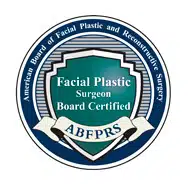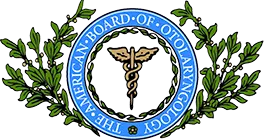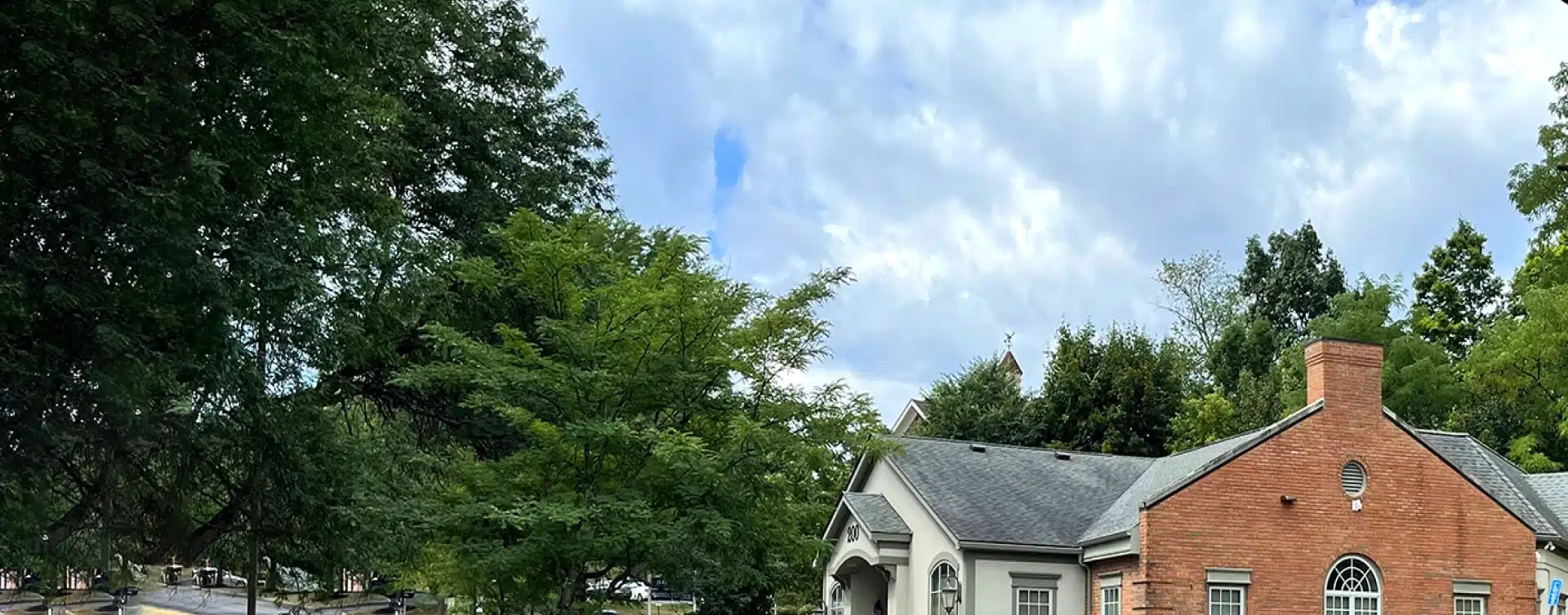Benefits of Nasal Functional Surgery
Struggling with frequent sinus issues or impaired breathing doesn’t just hamper your health—it affects your quality of life. Nasal Functional Surgery offers you a holistic approach to tackle these concerns, ensuring you breathe easier and feel healthier. Discover the benefits this surgery offers, all performed by Dr. Rubinstein in Newburgh, NY.
What Is Nasal Functional Surgery?
While general rhinoplasty focuses on improving the shape or size of the nose to improve aesthetics, nasal functional surgery focuses on improving how the nose works.
The exact procedure will vary based on your needs but may include correcting a deviated or crooked septum, removing polyps or widening the nasal passages.
There are several benefits to combining form and functional results during nasal surgery. While a functional surgery will generally take longer than one performed for purely aesthetic reasons, it takes less time than two separate surgeries on the nose.

Additionally, a patient doesn’t have to undergo anesthesia twice, reducing the risks and costs of the procedure. If the surgery involves removing cartilage from the septum to correct a deviation, the surgeon can then use the cartilage while reshaping the nose.
While insurance companies usually never cover rhinoplasty when performed for aesthetic reasons, some will provide coverage for nasal surgery that corrects a functional issue with the nose. Depending on the patient’s specific needs, Dr. Rubinstein may perform one of the following procedures during nasal functional surgery.
Septoplasty
Everyone has a septum that divides their nasal cavity in two. In some people, the septum leans too far to one side or another, obstructing the nasal cavity. A crooked septum is called a deviated septum.
One of the most common signs of a deviated septum is difficulty breathing through the nose, usually on the side that’s blocked by the septum. For some people, breathing problems can be severe enough to interfere with their daily lives or reduce their quality of life.
Some people also have nasal bleeding or crusting, as the air that does flow through the nose can be very drying.
Septoplasty is a nasal surgery that fixes a deviated septum. During the procedure, Dr. Rubinstein will trim or reposition the cartilage or bone in the nose, correcting the deviation and helping patients breathe more easily.
Endoscopic Sinus Surgery
Chronic sinusitis, or sinus infection, occurs when you have swollen, inflamed sinuses for over three months. When your sinuses are continuously inflamed, they can’t drain properly and mucus builds up.
People with chronic sinusitis often have ongoing nasal congestion and discomfort that interferes with their daily lives. Nasal surgery can provide the best source of relief for certain patients. Usually, sinus surgery helps to improve:
- The number and severity of sinus infections
- Airflow through the nose
- Sense of smell
Traditionally, sinus surgery required the surgeon to make incisions in the mouth or face and had a lengthy recovery period that required nasal packing. Dr. Rubinstein performs an endoscopic version of the procedure, which eliminates the need for incisions.
During endoscopic sinus surgery, Dr. Rubinstein threads a small camera, called an endoscope, into the nose. The camera provides a good visual of the interior of the nasal cavity and sinuses. Using specialized instruments, Dr. Rubinstein removes nasal polyps, scar tissues or other blockages.
Since the surgery doesn’t require incisions, the risk of infection is significantly reduced.
Start Your Journey to Success, Don’t Wait More!
Schedule a consultation with Dr. Beran
Balloon Sinuplasty
Dr. Rubinstein was the first surgeon in the Hudson Valley to offer patients balloon sinuplasty treatment in 2008. Since that time, the treatment has evolved and been refined so that it’s now possible for patients to undergo the procedure in-office without the need for general anesthesia.
Originally intended to help patients with chronic sinusitis who didn’t respond to medication, balloon sinuplasty is now also used to help patients with recurrent sinus infections. Recurrent infections happen at least four times yearly. While symptoms clear up between infections, the need for medications can be harmful.
Balloon sinuplasty is considerably less invasive than traditional sinus surgery, as there is no need for cutting bone or nasal tissue. During the procedure, Dr. Rubinstein threads a small catheter through the nose, into the blocked sinus cavity. A balloon at the end of the catheter inflates, reshaping the interior of the cavity.
Once the treatment is complete, the sinus cavity can drain, relieving pressure and discomfort.
Turbinate Reduction
Your nose contains three pairs of long, tissue-covered bones, called nasal turbinates. People with allergies can experience swollen turbinates, which block airflow.
Turbinate reduction surgery removes or reshapes the nasal turbinates. Depending on the needs of the patient, Dr. Rubinstein can perform three different types of turbinate reduction surgery:
- Turbinectomy: A turbinectomy removes part or all of the lower turbinate, using a high-speed device to shave off the extra tissue and an endoscope.
- Turbinoplasty: During a turbinoplasty, Dr. Rubinstein threads a tool into the nose that changes the position of the turbinate and may reduce its size, too.
- Laser or radiofrequency ablation: During this procedure, a thin probe is threaded into the nose and laser light or radiofrequency is applied to shrink enlarged turbinates.
Are You a Candidate for Nasal Function Surgery?
If you experience ongoing sinus infections and don’t get relief from medications or other less invasive treatments, nasal function surgery may be right for you. You may also be a candidate for functional nose surgery if you have a structural issue, such as a deviated septum.
What Can You Expect During Surgery?
The surgical process depends on your concerns and overall goals. Some procedures, such as a balloon sinuplasty, can be performed under local anesthesia with oral sedation. Others, such as a septoplasty, require general anesthesia.
How long the surgery takes can also vary. If you combine rhinoplasty with functional nasal surgery, the surgical process itself will take longer. But your recovery time will be shorter compared to having two separate surgeries.

What Happens After Surgery?
Nasal function surgeries provide long-lasting results and relief to patients suffering from chronic infections and breathing difficulties.
For many patients, it takes time after surgery before the final results appear. It can be up to six weeks before you notice an improvement in your breathing or sinuses following a septoplasty or sinus surgery. Your nasal cavity needs time to heal from the surgery itself.
At the time of your surgery, Dr. Rubinstein will provide guidance and a list of things to do or not do in the weeks immediately after your treatment.
What Are the Risks of Nasal Functional Surgery?
Minimally invasive nasal functional surgeries, such as endoscopic sinus surgery or balloon sinuplasty, have fewer risks than traditional surgeries. You may have some swelling or bruising in the nasal area after surgery. Keeping your head elevated can help reduce swelling and bruising.
Why Choose
Dr. Rubinstein
- Dr. Rubinstein is one of the top facial plastic surgeons in New York & New Jersey.
- He is double board certified by the American Board of Facial Plastic Surgery and the American Board of Otolaryngology-Head and Neck Surgery.
- Dr. Rubinstein has been in both private and academic practice for over 20 years.
- He is also an active member of the American Society for Laser Medicine & Surgery.
- Clinical Professor at New York Presbyterian Hospital.
FAQs About Nasal functional surgery
Nasal functional surgery can benefit anyone who has ongoing sinus problems or difficulty breathing, particularly if those issues don’t respond to medication or more conservative treatments.
How long surgery takes depends on the procedures performed. Usually, combined surgeries make the process take longer but reduce overall recovery time.
Swelling and bruising are common after nasal surgery. You can help to reduce swelling by being gentle with your nose in the weeks after your surgery. Don’t blow your nose or pull clothing on over your head. Keep your head elevated as much as possible immediately after surgery.
Downtime and recovery time after surgery vary. Generally, you can expect to need at least one week off from work following surgery but may wish to take longer.
You’ll most likely feel pressure in the nasal area in the days and weeks following your surgery, particularly after an endoscopic sinus surgery. You may feel some discomfort following a turbinate reduction procedure.
Dr. Rubinstein doesn’t participate with most insurance plans. Some insurance providers will cover out of network nasal function surgery. Talk to your insurance provider to learn more about your coverage options for these procedures.



